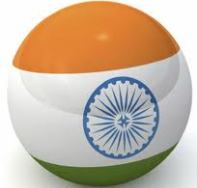Regional Trade Policy Courses (RTPCs) are three-month courses for government officials from developing countries/separate customs territories, LDCs, economies in transition, and countries in the process of accession to the WTO. They are organized and run by the WTO in partnership with institutions of higher learning in different regions of the world. The RTPC in 2011 for Asia – Pacific Region is being organized jointly by the WTO and the Centre for WTO Studies, IIFT New Delhi, during 5 September – 25 November 2011.During this 3-month programme, the participants will be given an in-depth exposure to WTO and international trade issues. The RTPC will seek to enhance the participants understanding of their regional environment and how it relates to trade-policy making; develop a good understanding of the WTO, including the Agreements; improve their analytical and negotiating skills; learn how to use effectively the relevant information and documentation on trade-related issues; and establish and/or strengthen a network of contacts between participants and with the trainers/experts.
No Decrease in Land under Forest Cover
The area under forests has not been decreasing every year due to urbanization and industrialization in different States of the country. There is a net increase of 728 sq. km forest cover in the country as per India State of Forest Report 2009. The Ministry of Environment & Forests is implementing a Centrally Sponsored Scheme of National Afforestation Programme (NAP) for regeneration of degraded forests and adjoining areas in the country.
Impact of Agriculture to Climate Change
Agriculture sector contributes to 17% of the net green house gas emissions from India in 2007. Indian Council for Agriculture Research (ICAR) and different State Agriculture Universities have been evolving technologies to reduce emissions from agriculture sector without compromising the food grain production. These tchnologies include improved irrigation management techniques, cultivation of aerobic rice, System of Rice Intensification (SRI) and use of neem-coated urea.
Extinction of Animals
As per the Red Data Book of International Union for Conservation of Nature (IUCN), there are 13 Critically Endangered species of birds in India. Among animals, 34 species have been identified in India as Critically Endangered in the class mammals, reptiles, fishes and amphibians.
Government Accords High Priority to Development of Rainfed Areas
Government has accorded high priority to holistic and sustainable development of rainfed areas. Specific thrust is given for rainfed areas in all major schemes of Ministry of Agriculture. Rainfed Area Development Programme (RADP) introduced in the year 2011-12 as a sub-scheme under Rashtriya Krishi Vikas Yojana (RKVY) is being piloted in 10 States with an outlay of about Rs.250 crore for productivity enhancement and augmenting family income through alternate production systems. Besides, watershed development programmes are being implemented for the development of rainfed and degraded areas based on concept of natural resource conservation.The National Rainfed Area Authority (NRAA) was set up as an expert body in November, 2006 to provide knowledge inputs regarding systematic up-gradation and management of country’s dryland and rainfed agriculture. NRAA is assisting States in preparation of States specific perspective plans for development of rainfed areas. The net sown area in the country is about 141.36 million hectare (2008-09) of which 78.17 million hectare (about 55%) is rained.
GDP and External Debt
In 2010-11 the Increase in GDP over the Previous Year is 20.2% while the Corresponding Increase in External Debt is 15.9%
|
Year
|
External Debt
(Rs. Crore)
|
Increase in External Debt over previous year (per cent)
|
GDP at market price (Rs. Crore)
|
Increase in GDP over previous year (per cent)
|
|
2008-09
|
1142125
|
27.3
|
5582623
|
12.0
|
|
2009-10
|
1179096
|
3.2
|
6550271
|
17.3
|
|
2010-11
|
1366117
|
15.9
|
7875627
|
20.2
|
India will Soon have Fibre Glass LPG Cylinders
The Government has advised Public Sector Oil Marketing Companies to call for a global expression of interest to set up facilities for manufacturing of composite cylinders (fibre glass) domestically. The composite cylinder being translucent, the level of LPG present would be visible in these cylinders, thereby improving customer’s satisfaction about the quantity of LPG contained in cylinders. Handling of these cylinders would be easier as they will be lighter in weight than steel cylinders.
Industrial Production Growth Rate
Industrial growth measured in terms of index of Industrial Production (IIP) improved from 2.5% in 2008-09 to 5.3% in 2009-10 and further to 8.2% in 2010-11. In the first quarter of current year, the growth moderated to 6.8% compared to a growth of 9.6% in the first quarter of the previous year. The moderation in the growth in the first quarter was largely on account of a moderation of growth in the mining sector. Consumer durables and intermediates within the manufacturing sector also witnessed moderation in growth. Hardening of interest rates to some extent affected the growth in these segments. The Union Budget 2011-12 has clearly indicated that for sustained growth of GDP and productive employment for younger generation, it is imperative that the growth in manufacturing sector picks up. Government is considering a manufacturing policy, which will bring down the compliance burden on the industry through self-regulation and help make Indian industry globally competitive. This will improve the growth rates for manufacturing and industry.
Cyber Crime
As per the information tracked and reported to the Indian Computer Emergency Response Team (CERT-In) at total of 117 Government websites were hacked in the year 2008, 2009, 2010 and 2011 (till June) by various hacker groups.






0 comments: